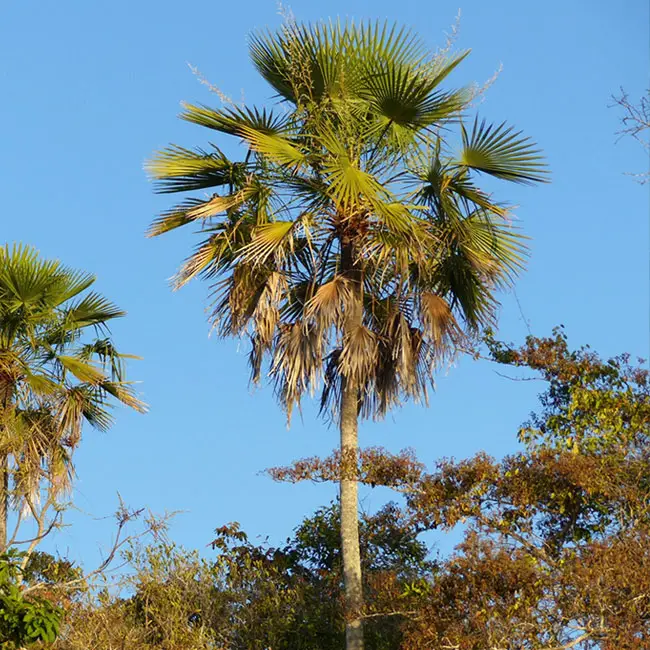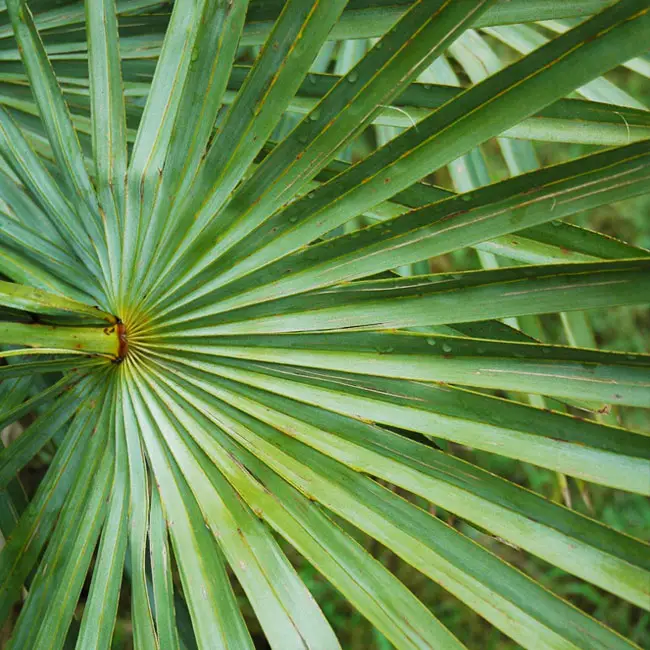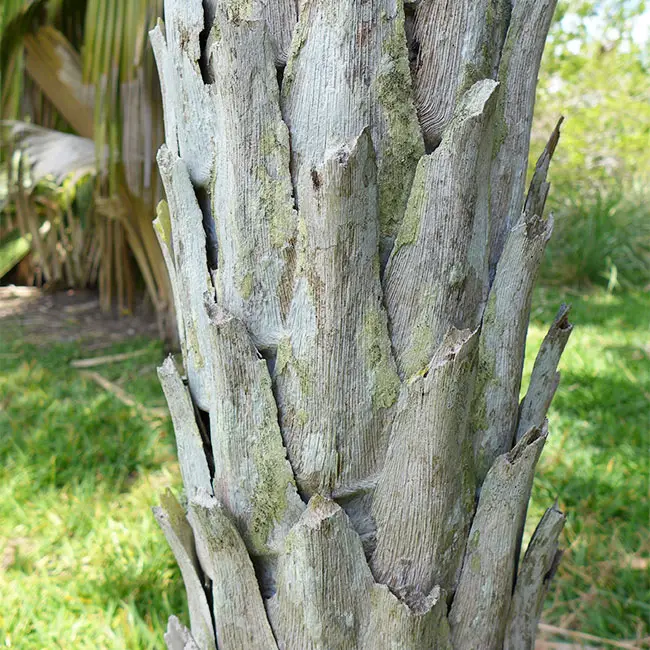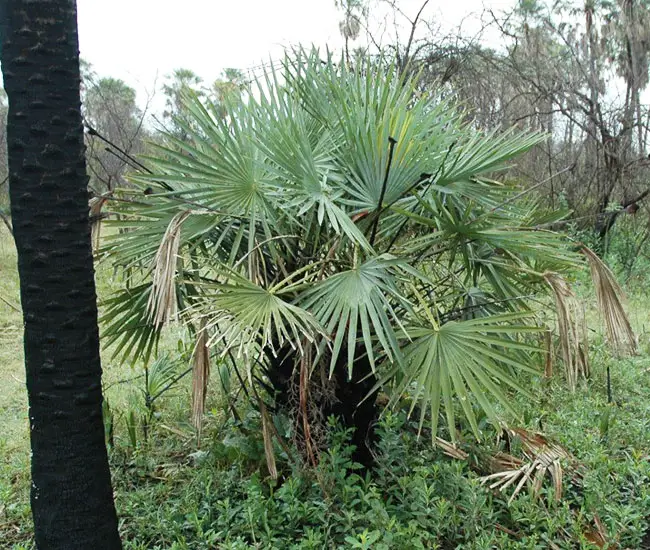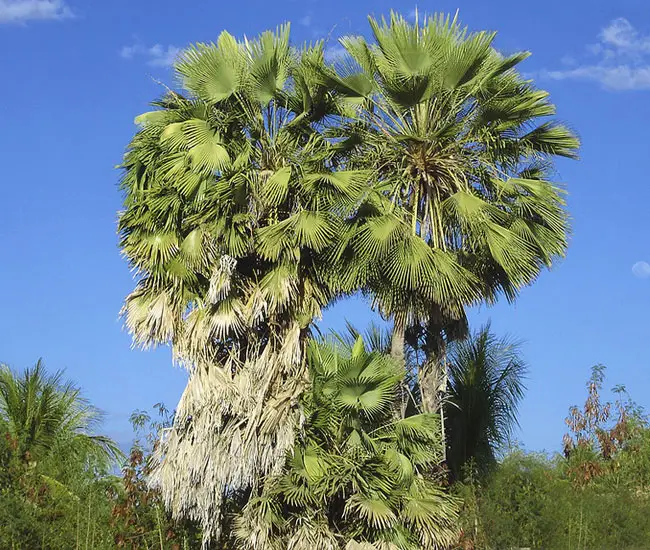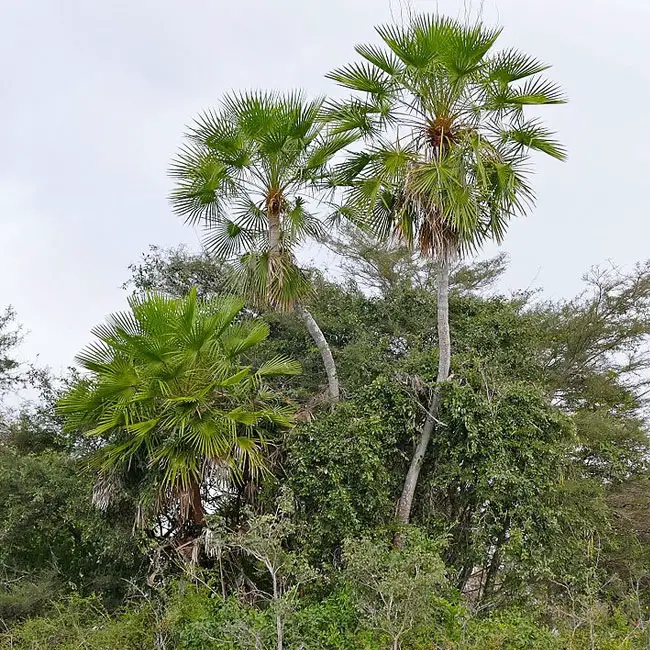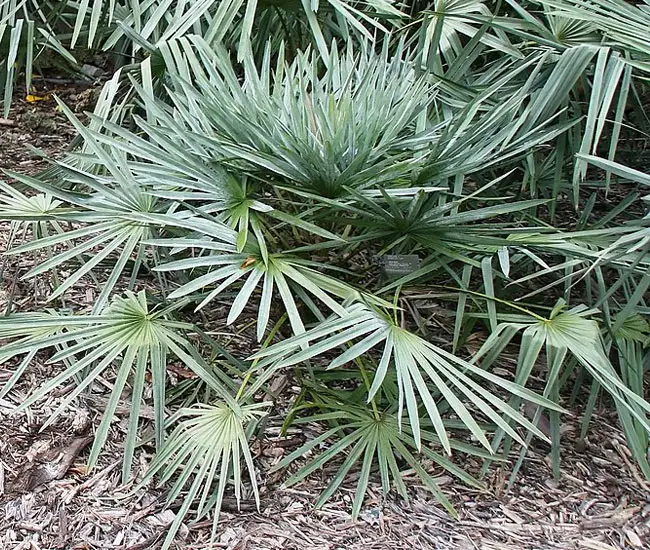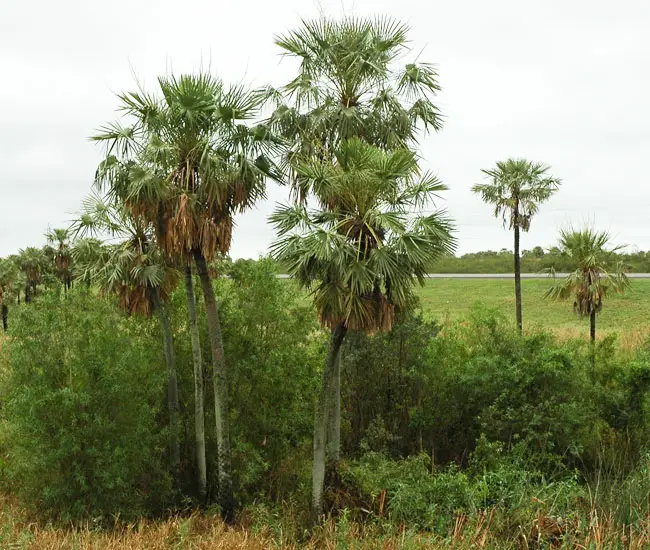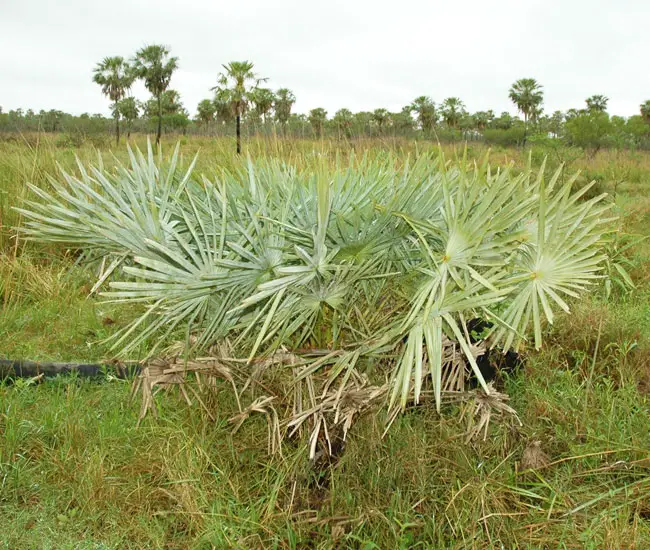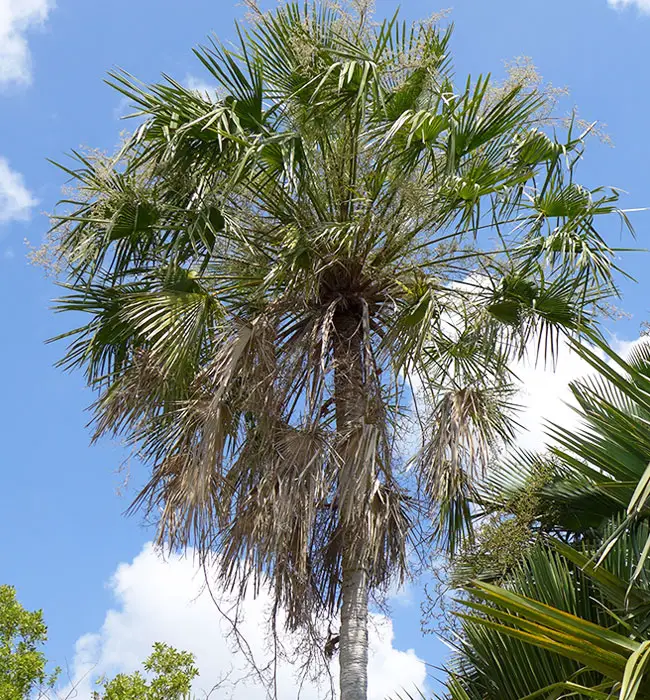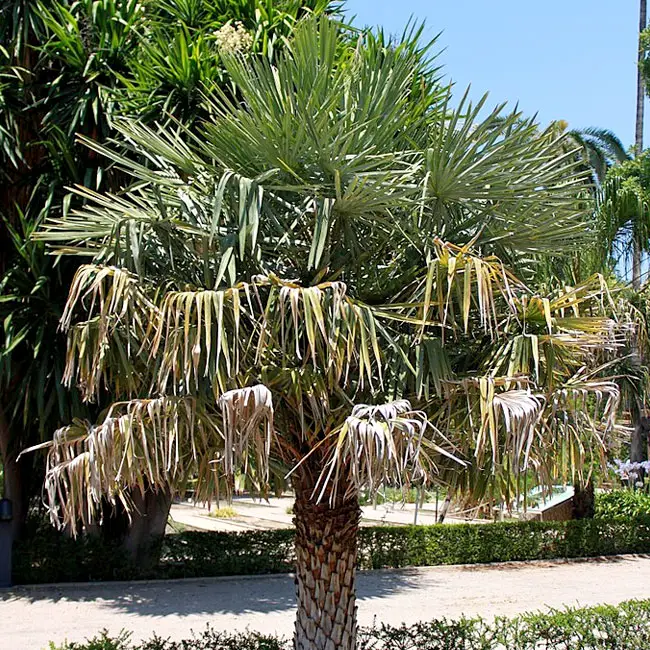
The Caranday Palm (Copernicia alba) is native to South America, specifically found in countries like Argentina, Brazil, Paraguay, and Bolivia. It is most commonly associated with the Gran Chaco region, a vast and diverse biome in South America known for its hot and semi-arid climate.
The Caranday Palm thrives in this arid and often harsh environment, making it a resilient and adaptable species. It is highly valued for various uses, including the extraction of wax from its leaves and its ornamental value in landscaping.
Quick Facts:
| Scientific name: | Copernicia alba or Trithrinax campestris |
| Common names: | Caranday Palm , Wax Palm, Caranday Wax Palm. |
| Origin: | Native to the humid parts of the Gran Chaco eco-region in Bolivia, Paraguay, Brazil and Argentina. |
| Growth Rate: | Slow. Up to 40 ft tall and 15 ft wide. |
| Cold Tolerance: | USDA zones 9b (25 – 30 F) to 11 (above 40 F) |
| Light Req: | Full sun. |
| Water Req: | Low to moderate. |
| Soil Req: | Well-drained alkaline to slightly acidic soil. |
| Fruit: | Black. Edible. |
| Propagation: | Seed. |
Caranday Palm Appearance
The Caranday Palm is characterized by its single, sturdy gray trunk, which typically measures around 7-10 inches in diameter. In its youth, these palm trees retain spiny old leaf bases that gradually shed as the tree matures, revealing a gray, cylindrical trunk.
Palmate or fan-shaped leaves emerge from the crown of the trunk, extending to a length of 2 feet. These visually appealing leaves are round in shape and are supported by rigid and spiny petioles. They showcase a color spectrum ranging from light green to silver and even light blue.
In the case of the Trithrinax campestris, the leaves of adult specimens display small red points or dots on both surfaces.
Caranday Palm Flowers and Fruits
The Caranday Palm (Copernicia alba) produces clusters of small, inconspicuous flowers that are arranged in compact inflorescences. These flowers are typically greenish-yellow to pale yellow in color. While not particularly showy or ornamental, they serve their purpose in the palm’s reproductive cycle.
Following successful pollination of the flowers, the Caranday Palm gives rise to small, round fruits that are typically less than an inch in diameter. These fruits are initially green and may transition to a dark purplish-black color as they ripen. While the fruits may not be widely consumed by humans, they are an essential food source for various wildlife species in their native habitat.
The most notable and commercially valuable feature of the Caranday Palm is not its fruits or flowers but the wax that it produces. This wax is derived from the leaves of the palm and has a long history of traditional use by indigenous peoples.
The wax is extracted and processed for various applications, including the production of candles, cosmetics such as lipstick, and certain car polishes. This unique characteristic has contributed to the economic and cultural significance of the Caranday Palm in its native regions.
How to Care For Caranday Palm
The growth rate of Copernicia alba is considered slow, with mature specimens achieving heights of up to 40 feet and spanning 10-15 feet in width. While in the wild, the Caranday Palm can reach towering heights of 60-70 feet, it tends to remain more compact when cultivated, generally not surpassing 30-40 feet in height.
Regarding cold tolerance, mature Caranday Palms can withstand minimum temperatures as low as 25°F. This makes them suitable for cultivation within USDA Hardiness Zones 9b (with temperatures ranging from 25 to 30°F) to 11 (above 40°F).
For optimal growth, the Caranday Palm thrives in environments characterized by full sun to partial shade and thrives best in well-drained, moist soil. This palm variety is known for its ease of cultivation and maintenance.
While generally healthy, Caranday Palms may occasionally experience potassium deficiency. To prevent nutritional deficiencies and promote robust growth, it is advisable to apply high-quality palm fertilizer with a continuous-release formula twice a year during the growing season.
Caranday Palm Pictures
